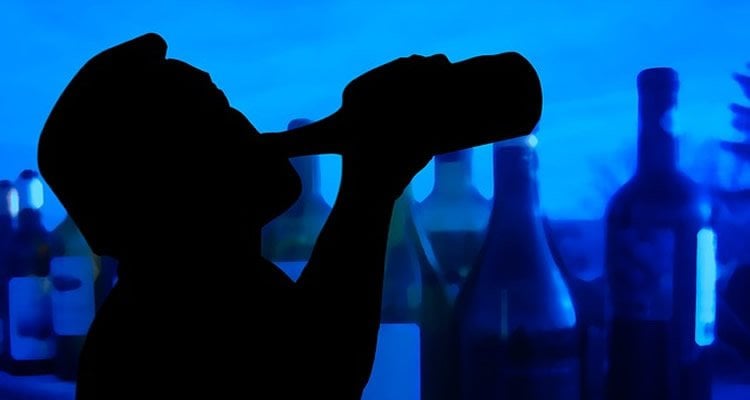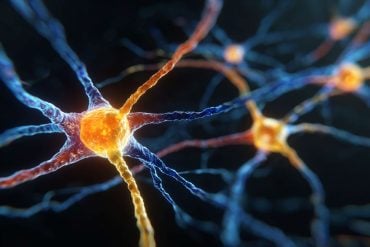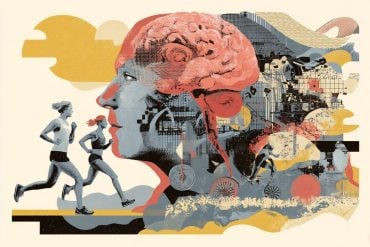Summary: A new study reports binge drinking affects gene expression in both males and females differently. In females who binge drink, genes linked to hormone signaling and immune function become altered, whereas in males, alterations occur to genes associated with nerve signaling.
Source: Frontiers.
Gene expression in an area of the brain linked to addiction is affected differently by repeated binge drinking in males and females, finds a new study published today in Frontiers in Genetics. It reveals for the first time that genes associated with hormone signaling and immune function are affected by repeated binge drinking in female mice, whereas genes associated with nerve signaling are affected in males. These findings have significant implications for the treatment of alcohol use disorder as they emphasize the importance of tailoring effective therapies towards male and female patients.
“We show that repeated binge drinking significantly alters molecular pathways in the nucleus accumbens, a region of the brain linked to addiction. A comparison of activated pathways reveals different responses in each sex, similar to that reported in recent research on male and female mice tested during the withdrawal phase following chronic alcohol intoxication,” says Deborah Finn, a Professor of Behavioral Neuroscience at Oregon Health & Science University and a Research Pharmacologist at the VA Portland Health Care System, USA.
She continues, “These findings are important as they increase our understanding of male and female differences in molecular pathways and networks that can be influenced by repeated binge drinking. This knowledge can help us identify and develop new targeted treatments for alcohol use disorder in males and female patients.”
Repeated binge drinking can be a risk factor for the development of alcohol dependence. Finn and her colleagues wanted to determine whether repeated binge drinking produced different responses in the brains of male and female mice, as has been found in alcohol-dependent mice tested during the withdrawal phase.
To do this, they analyzed gene expression in an area of the brain linked to addiction, the nucleus accumbens. Gene expression is the process where specific genes are activated to produce proteins for use by the cell, e.g. as building blocks for new tissues or hormones. Gene regulation governs the amount and timing of gene expression.
“We examined the effect of repeated binge drinking on the expression of 384 genes previously identified as important in addiction and mood disorders,” says Finn. “Of a total of 106 genes regulated by binge drinking, only 14 were regulated in both males and females, representing common targets to binge drinking. Interestingly, only 4 of these 14 genes were regulated in the same direction and the top 30 genes regulated by binge drinking in each sex differed markedly.”
The researchers analyzed the data further, to examine the likely overall effect the regulation and expression of these genes would have on males and females.

“Our results suggested repeated binge drinking had a very different effect on the neuroadaptive responses of the nucleus accumbens in males and females, with different pathways being activated in each sex. Pathway analysis suggests hormone signaling and immune function were altered by binge drinking in females, whereas nerve signaling was a central target of binge drinking in males,” reports Finn.
This has important implications for the treatment of alcohol addiction and emphasizes the need to tailor individual pharmaceutical treatments for male and female patients.
Finn explains, “We have shown that pharmacologically manipulating a pathway in both sexes that only was affected by binge drinking in males did not decrease binge drinking in females; binge drinking was only decreased in males. A consideration of sex is critical in the development of potential pharmacological therapies for the treatment of alcohol use disorder.”
She concludes, “Future studies will determine whether the current gene expression changes correspond to behavioral and/or physiological differences.”
Funding: The research was supported by US Department of Veterans Affairs, VA Portland Health Care System, NIH/National Institute on Alcohol Abuse and Alcoholism.
Source: Emma Duncan – Frontiers
Publisher: Organized by NeuroscienceNews.com.
Image Source: NeuroscienceNews.com image is in the public domain.
Original Research: Open access research for “Binge Ethanol Drinking Produces Sexually Divergent and Distinct Changes in Nucleus Accumbens Signaling Cascades and Pathways in Adult C57BL/6J Mice” by Deborah A. Finn, Joel G. Hashimoto, Debra K. Cozzoli, Melinda L. Helms, Michelle A. Nipper, Moriah N. Kaufman, Kristine M. Wiren and Marina Guizzetti in Frontiers in Genetics. Published September 10 2018.
doi:10.3389/fgene.2018.00325
[cbtabs][cbtab title=”MLA”]Frontiers”Binge Drinking Affects Male and Female Brains Differently.” NeuroscienceNews. NeuroscienceNews, 11 September 2018.
<https://neurosciencenews.com/binge-drinking-sex-differences-9843/>.[/cbtab][cbtab title=”APA”]Frontiers(2018, September 11). Binge Drinking Affects Male and Female Brains Differently. NeuroscienceNews. Retrieved September 11, 2018 from https://neurosciencenews.com/binge-drinking-sex-differences-9843/[/cbtab][cbtab title=”Chicago”]Frontiers”Binge Drinking Affects Male and Female Brains Differently.” https://neurosciencenews.com/binge-drinking-sex-differences-9843/ (accessed September 11, 2018).[/cbtab][/cbtabs]
Abstract
Binge Ethanol Drinking Produces Sexually Divergent and Distinct Changes in Nucleus Accumbens Signaling Cascades and Pathways in Adult C57BL/6J Mice
We previously determined that repeated binge ethanol drinking produced sex differences in the regulation of signaling downstream of Group 1 metabotropic glutamate receptors in the nucleus accumbens (NAc) of adult C57BL/6J mice. The purpose of the present study was to characterize RNA expression differences in the NAc of adult male and female C57BL/6J mice following 7 binge ethanol drinking sessions, when compared with controls consuming water. This binge drinking procedure produced high intakes (average >2.2 g/kg/30 min) and blood ethanol concentrations (average >1.3 mg/ml). Mice were euthanized at 24 h after the 7th binge session, and focused qPCR array analysis was employed on NAc tissue to quantify expression levels of 384 genes in a customized Mouse Mood Disorder array, with a focus on glutamatergic signaling (3 arrays/group). We identified significant regulation of 50 genes in male mice and 70 genes in female mice after 7 ethanol binges. Notably, 14 genes were regulated in both males and females, representing common targets to binge ethanol drinking. However, expression of 10 of these 14 genes was strongly dimorphic (e.g., opposite regulation for genes such as Crhr2, Fos, Nos1, and Star), and only 4 of the 14 genes were regulated in the same direction (Drd5, Grm4, Ranbp9, and Reln). Interestingly, the top 30 regulated genes by binge ethanol drinking for each sex differed markedly in the male and female mice, and this divergent neuroadaptive response in the NAc could result in dysregulation of distinct biological pathways between the sexes. Characterization of the expression differences with Ingenuity Pathway Analysis was used to identify Canonical Pathways, Upstream Regulators, and significant Biological Functions. Expression differences suggested that hormone signaling and immune function were altered by binge drinking in female mice, whereas neurotransmitter metabolism was a central target of binge ethanol drinking in male mice. Thus, these results indicate that the transcriptional response to repeated binge ethanol drinking was strongly influenced by sex, and they emphasize the importance of considering sex in the development of potential pharmacotherapeutic targets for the treatment of alcohol use disorder.






